Welcome to “Best Plants for Growing in Containers,” where the joys of gardening are just a pot away! Whether you’re a budding gardener just starting out or a seasoned green thumb looking to expand your collection, this guide is your gateway to cultivating a thriving indoor oasis. We’re here to show you that with the right plants, a little love, and some practical know-how, anyone can transform a simple container into a lush, living masterpiece.
This curated list of container-friendly plants is a treasure trove for those eager to bring nature’s beauty indoors. You’ll discover plants that not only fit perfectly into your living space but also bring a burst of freshness and vitality to your home. From air-purifying powerhouses to vibrant blooms, these selections promise to enrich your environment, all while being delightfully easy to care for. So, grab your gardening gloves and let your imagination flourish—success is just a container away!
Cherry Tomatoes (Compact and Prolific)
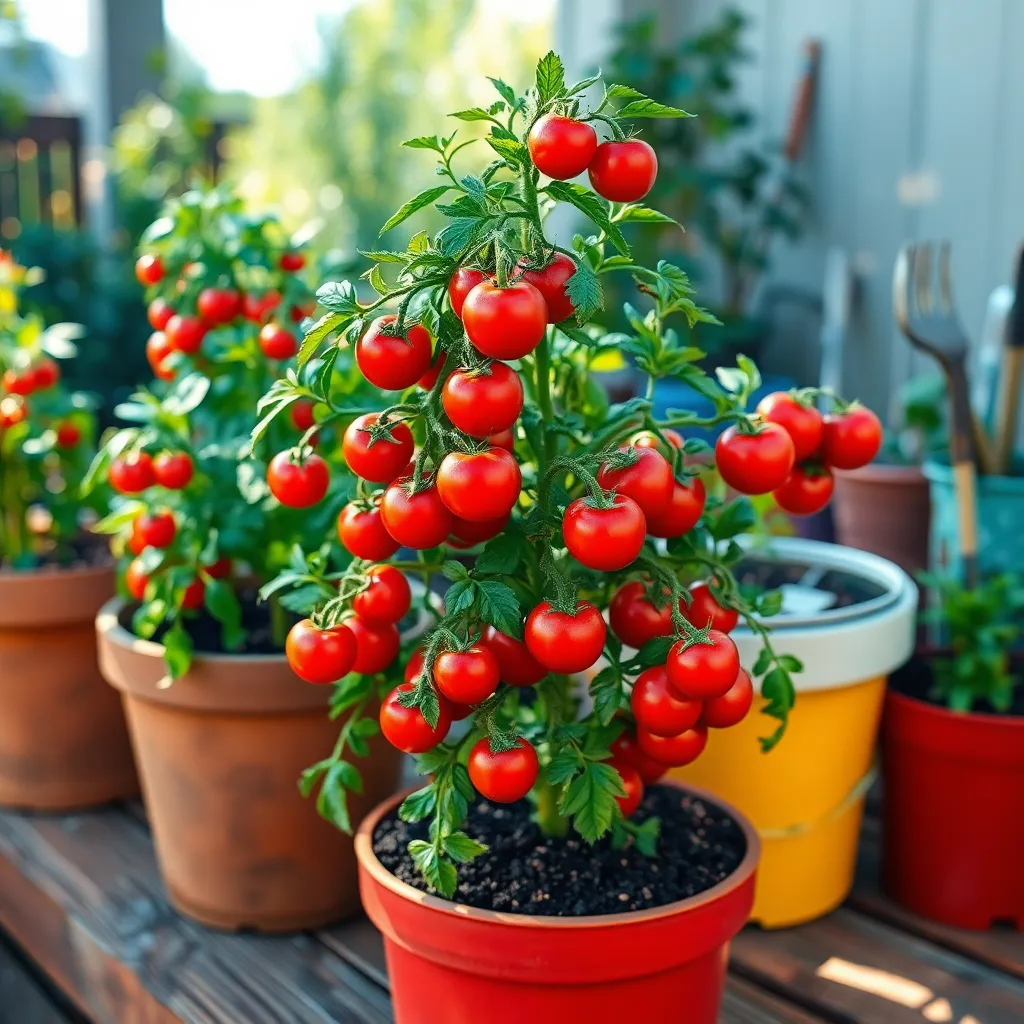
Cherry tomatoes are an excellent choice for container gardening due to their compact size and prolific fruiting. They thrive in pots that are at least 12 inches deep and wide, which provides ample space for root development.
To ensure healthy growth, fill your container with a high-quality potting mix enriched with compost or a slow-release fertilizer. This nutrient-rich soil will support the plant’s vigorous growth and abundant fruit production.
Place your container in a location that receives at least six to eight hours of sunlight per day, as cherry tomatoes require full sun to flourish. Keep the soil consistently moist, watering deeply whenever the top inch feels dry to the touch.
For those looking to maximize yield, consider installing a small trellis or cage to support the plant as it grows. This not only helps keep the plant upright but also improves air circulation, reducing the risk of disease.
Herbs Like Basil and Mint (Aromatic and Versatile)
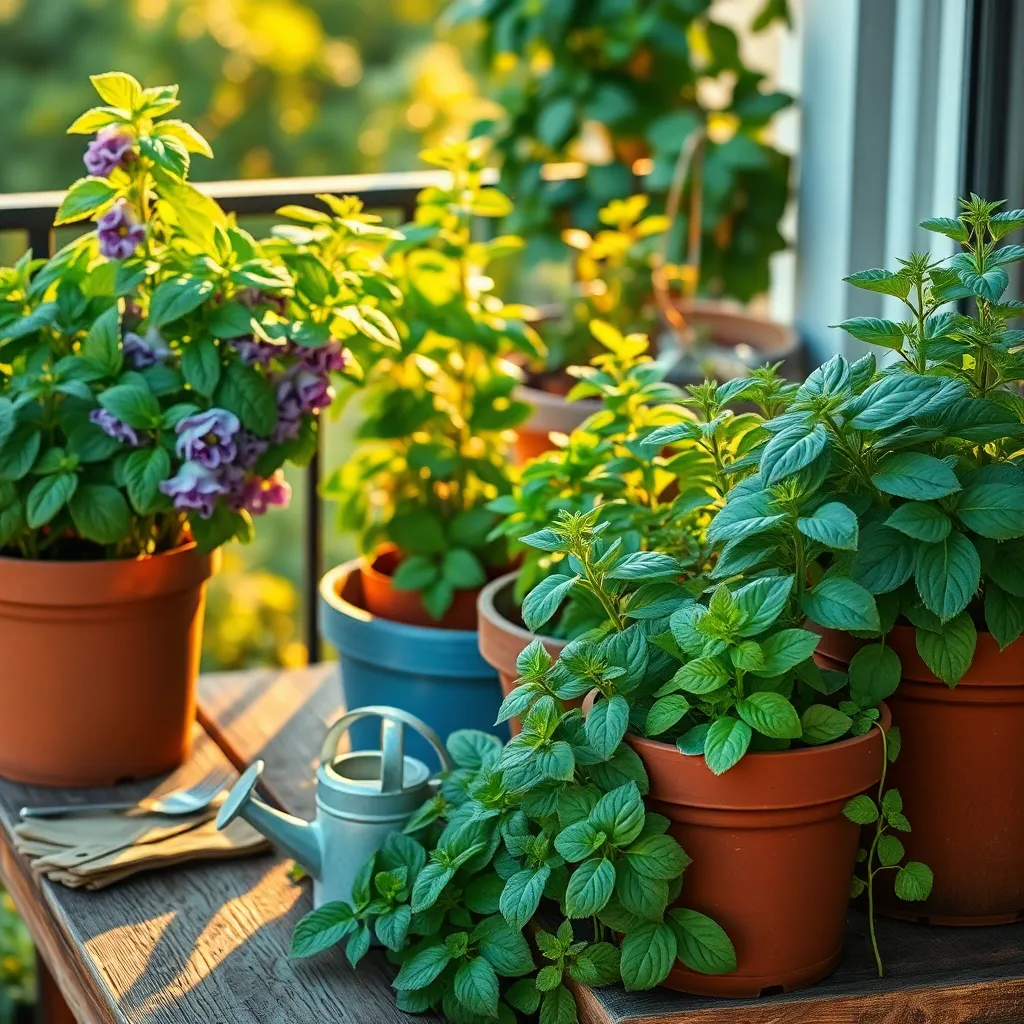
Growing herbs like basil and mint in containers is a fantastic way to enjoy fresh flavors at your fingertips. Both herbs thrive in containers, making them ideal for small spaces such as balconies or kitchen windowsills.
For optimal growth, place your herb containers in a location that receives at least six hours of sunlight daily. Basil prefers well-draining soil with a pH of 6.0 to 7.5, while mint is more forgiving and can tolerate a range of soil conditions, though it thrives best in slightly acidic to neutral soils.
Watering is crucial for these herbs; basil should be watered when the top inch of soil feels dry, whereas mint requires more frequent watering to keep the soil consistently moist. To enhance growth, consider using a balanced, water-soluble fertilizer once a month, ensuring you follow the instructions to avoid over-fertilization.
For those looking to expand their gardening skills, consider experimenting with different varieties of basil, such as purple or Thai basil, which offer unique flavors and aesthetics. Mint is also available in numerous varieties, like chocolate mint or peppermint, each bringing its own distinctive aroma and taste to your garden.
Dwarf Citrus Trees (Space-Saving and Fruity)
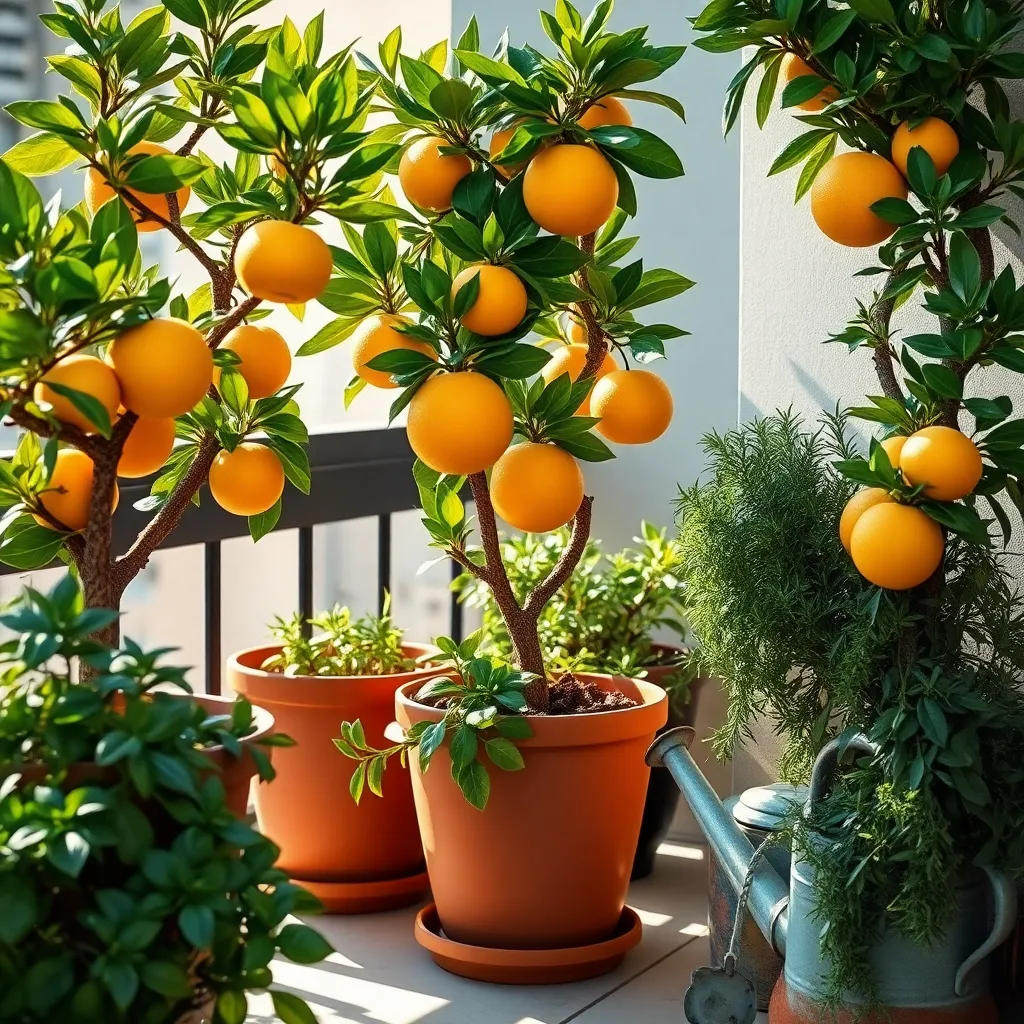
Dwarf citrus trees are an excellent choice for container gardening, offering both beauty and bounty in a compact form. By growing these trees in containers, gardeners can enjoy fresh citrus fruits even in limited spaces like patios or balconies.
When selecting a container, choose one that is at least 18 inches wide and deep to accommodate root growth and ensure stability. Use a high-quality potting mix with good drainage, enriched with organic matter, to support healthy growth and fruit production.
Position your dwarf citrus tree in a spot that receives at least 6-8 hours of sunlight per day, as sunlight is crucial for fruit development. Regular watering is essential, but be sure to let the top inch of soil dry out between waterings to prevent root rot.
For those looking to maximize fruit yield, feeding your tree with a balanced citrus fertilizer every six weeks during the growing season is beneficial. In colder climates, consider bringing your tree indoors or providing frost protection during winter months to ensure its longevity.
Succulents and Cacti (Low-Maintenance and Stylish)
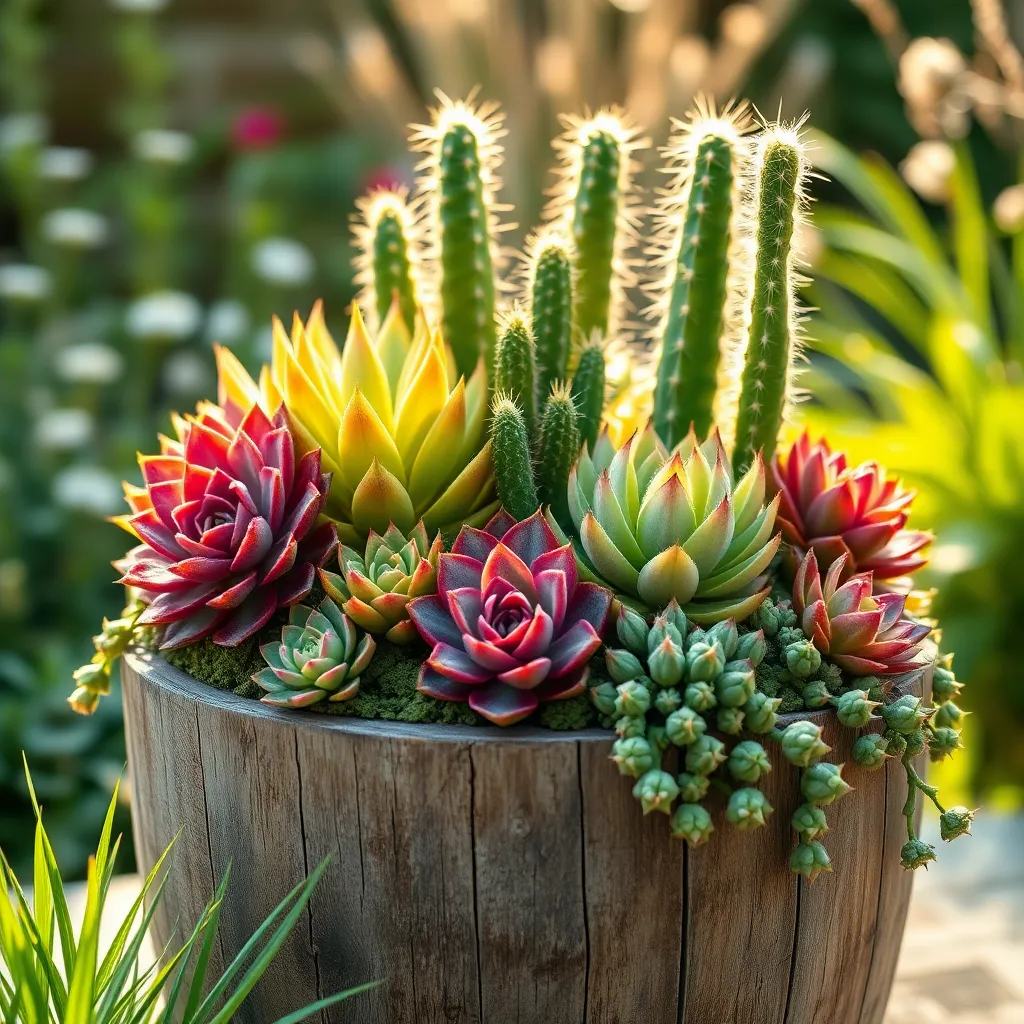
Succulents and cacti are excellent choices for container gardening due to their low-maintenance needs and stylish appearance. These plants are perfect for both beginners seeking simplicity and experienced gardeners looking to add a modern touch to their space.
To ensure success, place your succulents and cacti in a location that receives at least six hours of bright, indirect sunlight daily. If natural light is limited, consider using a grow light to provide the necessary light conditions.
When it comes to soil, opt for a well-draining mix specifically formulated for cacti and succulents. You can create your own by combining two parts potting soil, one part sand, and one part perlite to improve drainage and prevent root rot.
Watering is a crucial aspect of caring for these plants, and it’s essential to let the soil dry out completely between waterings. Typically, watering every two to three weeks will suffice, but adjust based on environmental factors like humidity and temperature.
- Check moisture levels by inserting a finger into the soil; if it feels dry, it’s time to water.
- Use pots with drainage holes to prevent water accumulation at the bottom.
For more experienced gardeners, try propagating succulents by taking leaf cuttings or offsets, which can be an enjoyable and rewarding experience. Simply let the cuttings dry for a few days to form a callous before planting them in a new container with well-draining soil.
Climbing Peas and Beans (Vertical Growth and High Yield)
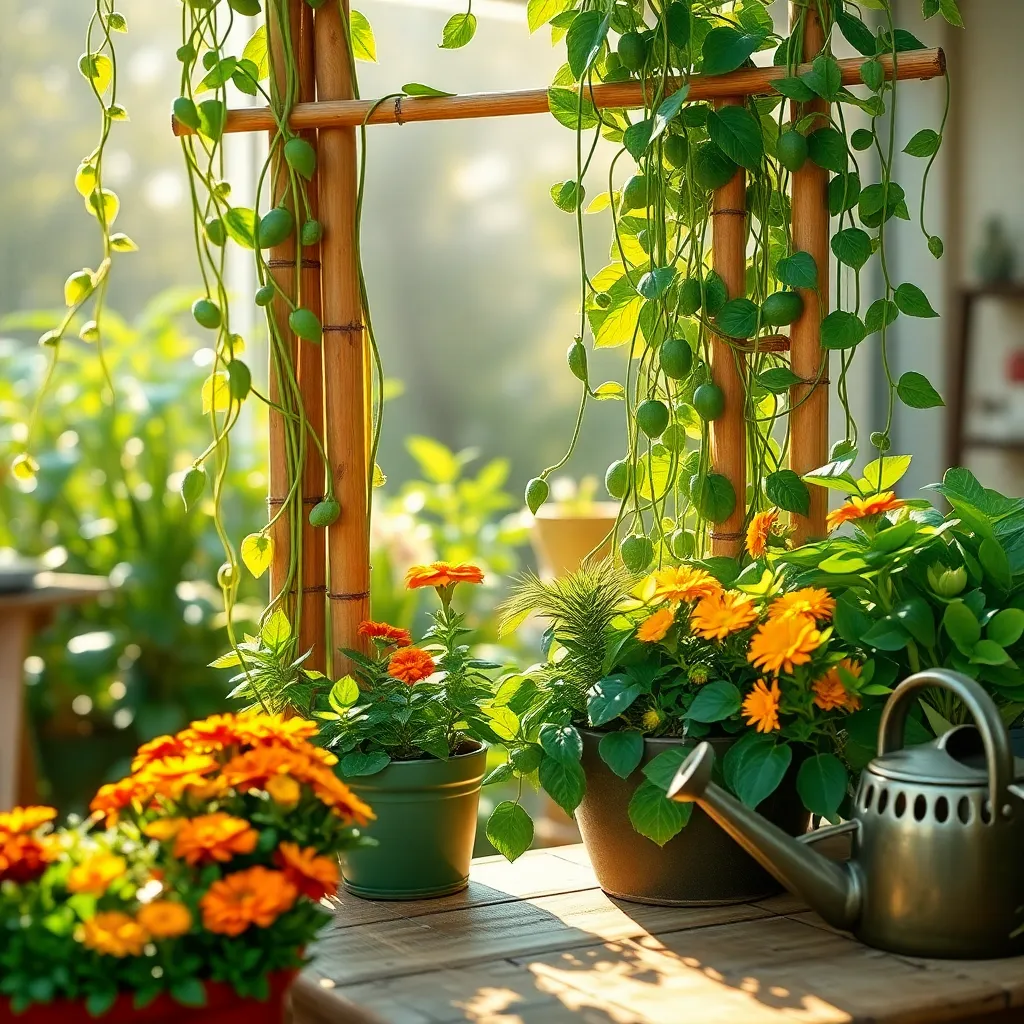
Climbing peas and beans are excellent choices for container gardening due to their vertical growth habit, allowing you to maximize space. These plants thrive in containers that are at least 12 inches deep and wide, providing ample room for root development.
Choose a light, well-draining potting mix to keep your climbing peas and beans healthy and productive. It’s beneficial to incorporate a balanced, slow-release fertilizer into the soil at planting to support continuous growth.
Consistent watering is crucial for these climbers; aim to keep the soil evenly moist but not waterlogged to prevent root rot. Installing a sturdy trellis or stakes in your container will provide essential support as the vines grow, helping them reach their full potential.
For beginners, starting with bush varieties like bush beans can be easier, but those seeking a more substantial yield should opt for pole beans or climbing pea varieties. Advanced gardeners might experiment with succession planting, sowing new seeds every couple of weeks to ensure a continuous harvest throughout the growing season.
Conclusion: Growing Success with These Plants
As we’ve explored, nurturing relationships, much like growing plants in containers, requires the right conditions and care. First, understanding the unique needs of your partner—similar to knowing the specific requirements of each plant—ensures a thriving relationship. Second, providing consistent attention and communication is akin to regular watering, vital for growth. Third, adaptability and being open to change can help navigate challenges, much like adjusting to a plant’s changing light needs. Fourth, cultivating patience allows time for both relationships and plants to flourish. Lastly, fostering a supportive environment encourages blooming both emotionally and physically.
To put this wisdom into action, take a moment today to identify one way you can nurture your relationship, whether through a heartfelt conversation or a small gesture of love. Bookmark this article now to revisit these insights whenever you need a reminder of the nurturing process.
Remember, just as a well-tended plant brings beauty and vitality, a well-nurtured relationship can blossom into a lifelong source of happiness and fulfillment. By taking these steps, you’re planting the seeds for a successful future together. Save this guide as your handy reference and embark on your journey to cultivating a thriving relationship.

